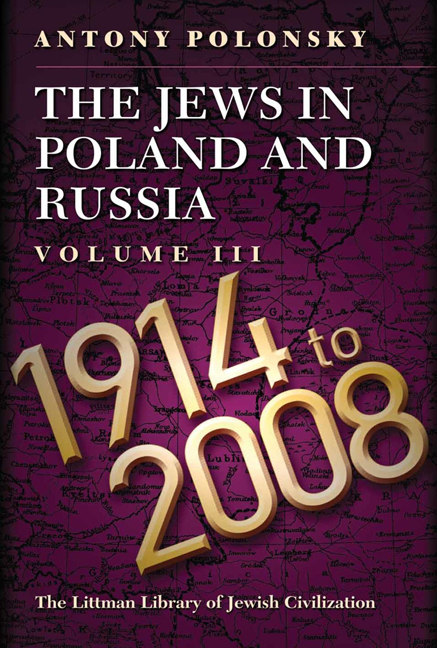Book contents
- Frontmatter
- Dedication
- Acknowledgements
- Contents
- List of Maps
- List of Tables
- Note on Transliteration
- Note on Place Names
- Maps
- General Introduction
- PART I FROM THE FIRST WORLD WAR TO THE SECOND
- PART II WAR AND GENOCIDE, 1939–1944
- PART III FROM THE END OF THE SECOND WORLD WAR TO THE COLLAPSE OF THE COMMUNIST SYSTEM
- EPILOGUE JEWS IN EASTERN EUROPE AND RUSSIA SINCE THE END OF COMMUNISM
- Conclusion
- Glossary
- Bibliography
- Index
6 - Lithuania between the Two World Wars
- Frontmatter
- Dedication
- Acknowledgements
- Contents
- List of Maps
- List of Tables
- Note on Transliteration
- Note on Place Names
- Maps
- General Introduction
- PART I FROM THE FIRST WORLD WAR TO THE SECOND
- PART II WAR AND GENOCIDE, 1939–1944
- PART III FROM THE END OF THE SECOND WORLD WAR TO THE COLLAPSE OF THE COMMUNIST SYSTEM
- EPILOGUE JEWS IN EASTERN EUROPE AND RUSSIA SINCE THE END OF COMMUNISM
- Conclusion
- Glossary
- Bibliography
- Index
Summary
Fifteen million Jews are watching your experiment in the struggle for national rights.
LEO MOTZKIN, representative of the World Zionist Organization at the Second Congress of Jewish Communities in Lithuania, Kaunas, 14 February 1922It was said that, in return for smashing Jewish windows in Leipalingis, Hitler had presented to Lithuania, as a gift, some kind of expensive aeroplane. And if a few Jews had been finished off, then he would have returned the entire Klaipe.da district to Lithuania. The farmers are spreading these rumours in all seriousness.
Police report on the disturbances in Leipalingis in June 1939WITH THE COLLAPSE of the Western Front in 1918, the puppet Lithuanian state established on 16 February of that year was able to repudiate Wilhelm of Urach as king of Lithuania, and on 5 November to invite Augustinas Voldemaras, who was to head the Lithuanian delegation at the Paris Peace Conference, to become prime minister. The new government became fully sovereign with the armistice of 11 November, with Antanas Smetona as president. Along with Voldemaras and his Cabinet, he was responsible to the Taryba, Lithuania's new parliament.
The country was now faced with the difficult task of forming an effective administration and army. It was also confronted with serious threats to its independence from the Soviets, the Poles, and White Russians linked with the German unofficial forces in the Baltic and led by Pavel Bermondt-Avalov. On 22 December the Russian government recognized a Lithuanian Soviet Republic, and on 5 January 1919 the Red Army occupied Vilna, where the local communists had attempted to take power on 15 December; subsequently, on 27 February, they set up a communist administration for the combined area of Lithuania and Belarus, the Lithuanian–Belarusian Soviet Socialist Republic (Litbel). The Lithuanian government was compelled to withdraw to Kaunas on 2 January but managed to organize an army, which by April numbered between 5,000 and 6,000 men, and by mid-1919 had driven back the Soviets. In the summer Litbel ceased to exist, and in late August the Red Army was forced to evacuate the last Lithuanian town under its control.
- Type
- Chapter
- Information
- The Jews in Poland and RussiaVolume III: 1914 to 2008, pp. 205 - 238Publisher: Liverpool University PressPrint publication year: 2012



